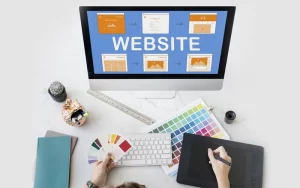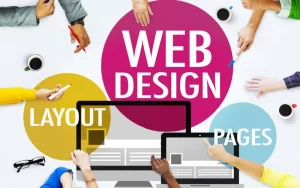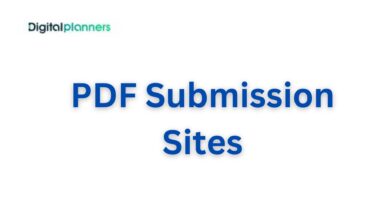The Impact Of Typography On User Experience In Web Design
Web design isn’t just about picking pretty colors and pasting images; it’s a sophisticated dance that juxtaposes the visual with the functional. This is where typography enters stage left, a silent (mostly) performer that has a thunderous impact on the user experience (UX). In an orchestra of design elements, your font choices aren’t merely part of the set; they can be the very score of your online symphony, guiding user emotions and actions without missing a beat.
But hold on, Newbie of the UI, Sage of Serifs, and Patron of Pixels – before you start throwing around font styles like digital confetti, it’s pivotal to understand the meat and potatoes of typography. In this piece, we’re stripping it all down to the bare typebones and building it back up, stronger, cleaner, and unmissable.
Tackling Typefaces from the Ground Up
When we say ‘typography,’ we’re talking about the style and appearance of printed matter. In web design, typography is every type choice you implement, from the headline that sings out at the homepage, right down to the various paragraphs cataloging your ‘About Us’ section. It’s the Agatha Christie novel of your website, with twist and turns – if you’ll pardon the metaphor – in every leading line.
First things first, there’s a roster of font fundamentals to familiarize yourself with:
Typeface vs. Font
A typeface is the design of the type, the ‘look’ of the letters, numbers, and symbols. The font? That’s the delivery system, the file you install on your system to have that typeface at your disposal.
Styling it Out
Font style encompasses everything from the classic serif to the modern sans-serif, the shouty display to the flowing script. Each style says something different; it’s your silent form of branding communication.
Size Matters
The scale of your type can make a huge difference. It’s not just about fitting text in, it’s about the relative importance of your words, ensuring the display of information is as intuitive as it is informative.
Spacing the Word(s)
Letter spacing (tracking) and line spacing (leading) ensure your copy isn’t a congealed mess but a flowing, readable elderberry wine of internet information.

Structuring the Wordsmithery
Structural integrity in typography is about creating an order to the way the reader navigates your content. It’s about making the important bits pop and the supportive elements play their part without overshadowing the star.
Building the Visual Hierarchy
Visual hierarchy is a layout of significance. It makes sure your site visitors know where to look first, where to go next, and what’s leading the narrative of their UX adventure. This means deploying different font sizes, colors, and weight to give your words not just meaning, but structure.
The Readability Revolution
You want users to engage with your content, not grunt and groan their way through it. This is the chapter where you need to learn how to pair fonts that play nice together, make sure the lines aren’t too dressed up in each other’s words, and ensure the letters don’t get lost in the crowd.
Branding By the Books
Think you can skip the type-business if you’re not a big-name corporation? Nuh-uh, my friend. Every website, from the gargantuan to the grass-roots, needs to convey who they are. Typography provides that extra layer; custom fonts give your site a voice as unmistakably yours as your actual voice.
Accessibility Ain’t a Font of Jokes
Accessibility is the silent hero of web design. It ensures that your typography doesn’t alienate your audience. This means making sure that everyone, regardless of visual impairments or reading difficulties, can enjoy the feast of your fontage.
Feeling Your Fonts
Fonts aren’t tools you chuck around willy-nilly. They’re your emotion-conjurers, your atmosphere producers. It’s not just saying the words; it’s how you dress them up that really speaks to the heart of the UX – its feeling.

Responsiveness and Redefining Readable
The screens in life come in all shapes and sizes. Your typography needs to dress to impress, whether it’s on a billboard or a biro. Responsive design is the tailor your typeface needs, adjusting as necessary to always look fine.
Case Studies in Letter-lore
Lecture over, it’s story time. Real-world examples show just how much a well-tailored font can do. We’re breaking down the type walls, analyzing successful websites that have mastered the art of typographic UX.
The Law of Type
No blog post would be complete without the rules. We’re drafting the super six of typography best-practices, so you don’t turn a ‘read’ to a ‘might as well analyze hieroglyphics.’
The Future of Fonts Today
Typography isn’t a stagnant puddle; it’s a constantly flowing river, and we’re excited about waving through the waters of variable fonts and typographic animations. We’ll explore what’s new, what’s on the horizon, and how to keep your fonts fit for the future.
Signing Off
In the end, typography might be the unsung hero of web design, but it’s the element that gives your website its distinct voice. Whether silent or shouting, wistful or whimsical, your typefaces should be chosen with the reverence they deserve. They are, after all, the pixelated poets who will populate the perpetually powerful, possibly pretty, pages of your online conquests. The pen might be mightier than the sword, but it got a whole lot cooler once it became digital.
With these typesetting tips under your belt, you’re ready to imprint the digital world with your typographic personality. Remember, every font choice is a chance to make an impression. Be bold, be creative, but most of all, be intentional. After all, in the tale of your website’s user experience, it’s the fine print that people always remember.



